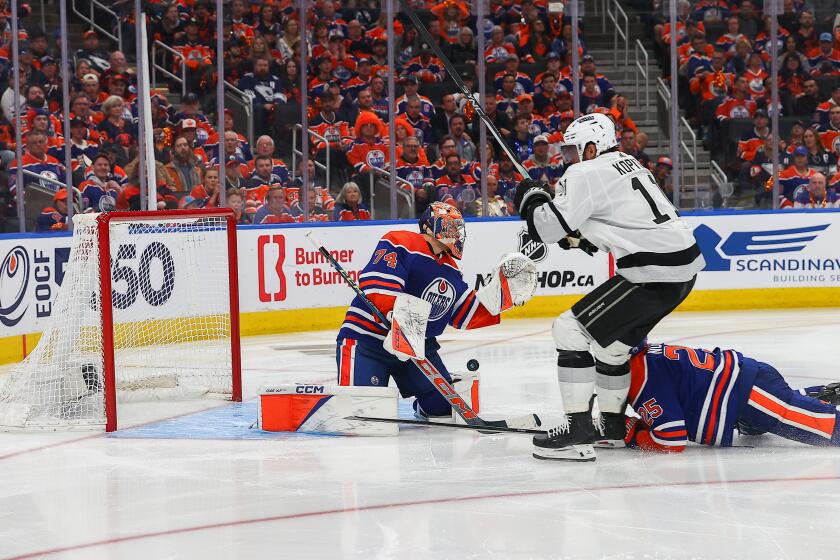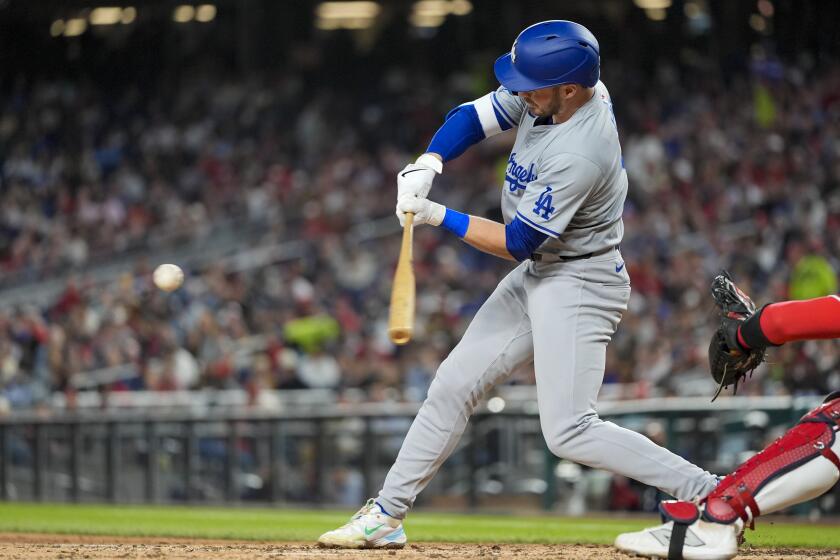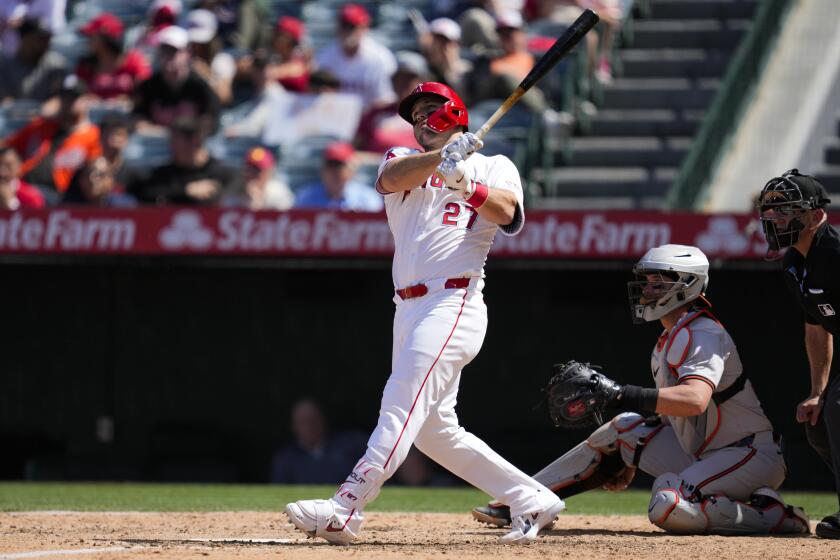Playoff series length can affect play for Dodgers and Diamondbacks

Since Major League Baseball introduced the best-of-five division series 22 years ago, the winner of the first game has won the series 72% of the time. That rate is only slightly higher than in the next rounds’ seven-game series. The abbreviated length for the MLB postseason’s first round does not significantly alter the series’ outcomes, in reality or in theory.
It does change the way the games are played and, mostly, managed, as the first two games of the National League Division series between the Dodgers and Diamondbacks demonstrated.
Statistics tell us that if Team A would ordinarily beat Team B 55% of the time, Team A would be 59% likely to win a five-game series over Team B. Stretch that out to a seven-game series, and Team A would win 61% of the time.
For the first three years of the new division series, it included only one travel day. A 1998 change instituted the 2-2-1 format, with two included off days. In terms of in-game strategy, there are two ways the current form of a best-of-five series differs from a best-of-seven.
Chiefly is within the bullpen, where managers do not have to be as wary of their relievers’ workload. Dodgers manager Dave Roberts pointed that out Saturday afternoon. He said that he enjoyed the economical pitching from Tony Watson, Brandon Morrow, and Kenley Jansen in the Dodgers’ Game 1 victory. They required only 28 pitches to obtain eight outs in the Dodgers’ Game 1 victory. But, Roberts noted, Sunday’s off day meant he could have made it work in Game 2 even if they had not been as efficient.
“It’s always good, but not as important as it is in a seven-game series when you have the three in a row with the off-days here,” Roberts said. “In this short series, I think that that’s nice, but for them to be efficient and feel that I can go back to them and extend them if need be, that’s a good thing.”
Simply, Jansen can pitch in every game this series, if needed. The other factor of a best-of-five series is the threat it creates of a team’s starter going on short rest in Game 4 and then giving way to a fully rested starter for Game 5. In a 2-3-2 best-of-seven series, such a strategy is not possible.
The Dodgers have made heavy use of that threat with Clayton Kershaw in the last half-decade. When they have advanced to the National League Championship Series, they have not. They have rarely employed a second starter they felt comfortable using on short rest.
The National Basketball Association uses a best-of-seven series in its first round, switching from five in 2003. In that league, the added games have actively suppressed upsets, giving better teams a much better chance to hold court. The National Hockey League does it the same way, but upsets remain rampant.
Baseball does not know any different. Before Saturday’s Game 2 at Dodger Stadium, the Diamondbacks did not want to confront what a best-of-five series could mean for them.
“A couple people have been asking me questions,” said their manager, Torey Lovullo, when asked that question. “Is today the most important game of the series? The way I looked at it was yesterday was the most important game of the series. And, today, the one we’re playing right now is the most important game of the series.”
They are all important. It is the postseason. Each game swings the series’ trajectory. And, again, the five-game nature of the first round does not dramatically disturb the play on the field. It’s mostly the management of it that’s affected.
“Regardless of what happens,” said Arizona’s star first baseman, Paul Goldschmidt, “you just come out that next game and try to win.”
Follow Pedro Moura on Twitter @pedromoura
More to Read
Get our high school sports newsletter
Prep Rally is devoted to the SoCal high school sports experience, bringing you scores, stories and a behind-the-scenes look at what makes prep sports so popular.
You may occasionally receive promotional content from the Los Angeles Times.







